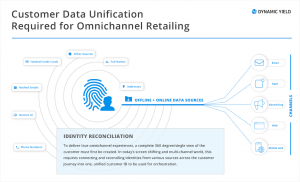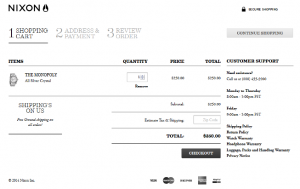As a marketer you are faced with an ever changing landscape of new tools, channels, tactics, and strategies that you are being forced to assess and put to practice. Whether you are a startup or independent marketer who is trying to find the best method for their marketing or a large multinational corporation that is trying to uncover the new landscape of digital, it can be depressing.
You are under attack at all times by new information, methods, and tools that may or may not prove to be useful. So what do you do? You could try each and every one of them to see which works, but that could take more time than you will ever have. You could read about them constantly and cherry pick the ones you think would work and test them. You could give jp and keep doing what you have in the past or you can take control. To take control we look at what has worked and fuse it with the new media landscape.
Steps to regaining control of your marketing:
- Choose your audience wisely, create a customer profile
This is a critical part of marketing that we often forget, but it can cause undue stress for those that don’t have one. Normally we make a generalized demographic decision with one or two defining attributes. Lets assume we are a software company selling software to manage customer orders and inventory that focuses on ease of use and minimal features.
Example of a typical customer demographic would be:
We target small business owners with companies in manufacturing that have 3-5 employees and revenue of $ 500k to $ 5M.
Now although this is specific and better than most customer targets, take a look at the customer new detailed customer profile below.
Example New Customer Profile:
We target Bob Harrison (fake name). He is 45 years old. He owns and operates a small manufacturing business ($ 3M in annual sales) that produces injection molded custom parts for the custom auto industry. He is passionate about his work and appreciates cars. He is not the most tech savvy with computers, but loves it when they make life simple. He has two kids (5 & 10) and family time is important to him. His company has less than 5 employees and the company runs lean. He wants to take care of his employees to keep them engaged and happy. He is focused on leaving a legacy for his kids. He wants to retire by 60.
How much different was that than the previous old style customer demographic? Did you feel like you knew Bob? Did you feel like you could find more Bob’s? Did you see how much more information you have when you know what Bob cares about? This can help an entire company from R&D to marketing and sales to make better product and focus on the right accounts.
Let’s take a quick look at what we know: Bobs owns and operates the business, he cares about leaving a legacy, he cares about his employees well being (time and money), he is passionate about his company, he cares about spending time with his family, he struggles with technology, but is open to trying it.
- Focus on your message:
Focus on your message At this point you should know who your audience is. I wont harp on it here, but if you dont have a detailed customer persona with details about age, number of kids, job title, hair color (just kidding, unless that applies to you), and any other defining features than I suggest you do that first.
For Bob’s company, your message would focus on how easy it is to use your product to grow your business without additional employees. How simple it is to automate tasks and how it helps you reclaim your time, sanity, and peace of mind.
- Now Choose your Marketing Channel
Now i hate to call this a marketing channel because you can’t just craft one piece of marketing and slam it down your customers throats using twitter, LinkedIn, slide share, and youtube, etc.
Instead you need appropriate content for each audience based on two factors: Is your customer on that channel and what mindset are they on this channel? For example, if your ideal customers are not on LinkedIn you wouldn’t use it. Likewise, if your ideal customer was on Facebook, but only for connecting with friends and family then you wouldn’t want to use it.
However, if you find that your ideal customer is on YouTube a lot searching for ways to improve processes then to are in!
- Choose your medium based on the message and channel.
Once you know what you want to say and which channel you will use, consider the type of content or marketing you will do. Will you create educational videos on YouTube about how to save time by automating processes in manufacturing? Do you want to use LinkedIn to provide blog posts on the same topic on because Bob is on there networking with folks about his business.
- Start Marketing and keep it up!
Once you have done the above, start marketing and track the results of traffic and conversions to your mailing list or number of phone calls. Try new methods if needed. Scale the ones that work and be consistent. Abandon the efforts that don’t produce results.
(209)





